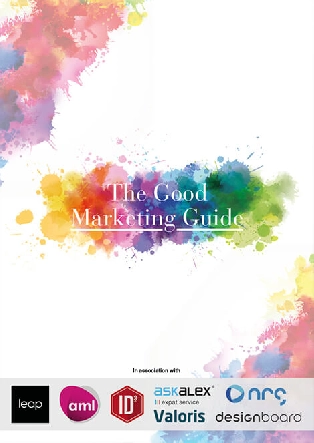Analytics can be very useful in helping with demand forecasting and retail predictions. This is because they enhance accuracy considerably. Unlike human behavior, data doesn’t lie. Thus analytics, particularly machine learning, can yield considerable insights.
Both retailers with physical stores, and those with online-only business need to consider demand forecasting if they want to make the most of customer behavior.
As the old adage goes, “retail is detail.” And it’s true, analytics will always be the right way forwards in determining the best course of action when making decisions within this constantly shifting e-commerce world.
A QA agency can help a retailer improve and maintain their business, but if a company isn’t organised about how much stock to order and supply (achieved through demand forecasting), then things are liable to fall apart very quickly.
What is demand forecasting?
Demand forecasting is all about attempting to predict how much demand there will be for specific products in the future. Such predictions help determine how much a retailer should stock and how much manufacturers should produce in the first place.
It can help a business determine how many suppliers they will need, helping them calculate how many products they should order as well. When this is determined correctly, it is vital in ensuring customer satisfaction, as the product the buyer wants to buy is readily available, so that nobody is left waiting for stock to be delivered. Customer operations are crucial to customer satisfaction rates, so what is retail operations should be a primary concern for any retailer.
Furthermore, correct demand analytics means that unsold stock doesn’t end up occupying important retail space. This ensures stronger order fulfillment and logistics. By optimising supply chains through correct demand forecasting, customers can be sure that products will be stocked at the right time and place, as expected.
This is further ensured through marketing campaigns that are informed by demand forecasting. Ads influence sales, therefore combining the two can help the successful campaign and purchase of an in-demand product. You can then use data-driven metrics to measure the effectiveness of your campaigns.
Why are analytics important in retail?
Now more than ever we have access to a lot of data and data-processing power. This power is now being used to make forecasts, sometimes as quickly as a million a minute. Unlike in the past, when the retail industry struggled to update demand forecasts quickly, the analytics we have access to now have changed everything.
In particular, analytics gathered through machine learning have been crucial to the retail industry. Machine learning (ML) is the ability a computer has to ‘learn’ things using data, without the need of extra programming.
Retail stores can feed the data they gather from sales and customer behavior to a computer. Machine learning then comes up with a series of patterns which can then be used to identify trends and potential behaviors customers employ, and which could influence demand.
Google released Tensorflow in 2015, a framework for machine learning that supports deep-learning and neural networks. Is tensorflow open source? Yes, and it is also the most popular AI engine available at the moment. Consider expanding your use and knowledge of AI and machine learning practices to help you improve as a retail business in predicting demand.
And, if you want to analyse your own data, consider exploring how to use pandas dataframe to manage your own data.
How do machine learning and demand forecasting go hand in hand in retail?
With machine learning, the elements that impact demand on a day-to-day basis are gathered and then applied to retail forecasts. This is incredibly useful, as there are a huge range of different types of data that can impact demand, down to weather data (for instance, heavy rain might put off a lot of people from going shopping that day) or even the number of clicks generated by your product popup plugin.
Analytics are therefore incredibly valuable to demand forecasting, and should be used in all contexts where data could be employed to anticipate or explain potential demand changes. In fact, remarkably, analytics can even fill in gaps where there is missing data. Without analytics, it would be very difficult to forecast demand, and therefore the two go hand in hand together.
When employed together, machine learning can accelerate data processing and provide an increased accuracy in forecasting. More data is analysed too, which means the potential for more hidden patterns being discovered.
When dealing with analytics, it’s also important to have a good software platform, like hadoop, to help manage data processing and storage. What is apache hadoop. Hadoop can process huge amounts of data, an invaluable service for a retailer looking to employ analytics into their demand forecasting.
Moreover, the relationship between demand forecasting and analytics goes even further, through the multiple types of demand impact that machine learning can capture.
These include:
1. Internal business decisions
The impact of things like promotions, changes in prices and variations in how products are physically displayed within a store.
Although retailers implement these changes themselves, often they are incapable of tracking the impact of said changes on demand. With machine learning, a retailer can scope out the price elasticity of a product (how much price changes affect demand). When a retailer carries out promotion forecasting, this skill is highly valuable for accurate predictions.
A product’s price position becomes incredibly straightforward when managed by machine learning.
2. External factors
These are factors not controlled by retailers. As aforementioned, one of these is weather, but other things that can impact demand include local events, in particular things like football matches and big sporting events.
External factors can be difficult to forecast. That’s where analytics and machine learning come in. An automated system does a large portion of the work for the retailer, helping with the forecasting process considerably.
3. Recurring demand patterns
Machine learning picks up on recurring variations in demand that are caused by holiday periods, weekdays and weekends, and different seasons. For instance, an obvious example is ice cream, which is bought more in the hotter months of the year. On the other hand, there will be more demand for umbrellas in the winter.
In demand forecasting, past patterns are applied to future demand. However, with recurring patterns, machine learning can go a step further. This is because it attempts to define the actual relationship between factors, for instance seasons, and their associated demand patterns, simplifying and streamlining the whole process.
With machine learning, multiple factors are taken into account. For instance, warm weather combined with a weekend could mean more demand for BBQ products than warm weather on a weekday.
4. Unknown factors
Changes in demand caused by factors that have not previously been recorded. This could mean many different things, but for instance, roadwork disruption could mean pedestrians are diverted from passing by a store, decreasing purchases made that day. Another common factor is the opening of a similar store nearby the store in question.
Significantly, like in the other instances, machine learning can even help adjust demand forecasts in situations where the influencer factor is an unknown one.
You might be wondering how this is possible. In a situation where direct competition has opened across the street, there will obviously be a dip in demand. There won’t be data about this in any of the stores systems.
However, machine learning can still help, as ML algorithms are capable of tentatively placing ‘change points’ within a forecasting model that track subsequent data. This model then validates or disproves a hypothesis, allowing forecasts to adapt very quickly to new, emerging demand levels.
However…
The world of analytics is vast, and machine learning is not limited to demand forecasting. It is a technology with huge potential, and the relationship between the two is only just beginning to be mined by the retail industry. There is a lot more value it could bring to the ecommerce sector and to businesses in general, so it is worth staying on top of trends as they slowly emerge.
Moreover, machine learning is not the only AI analytics you should be thinking about employing for your business. From workforce optimisation to effective goods handling in stores, there is a lot you can do with AI to raise your business to the next level. Analytics and demand forecasting in retail is only the beginning, but a good start to using data to prove customer experience and a smooth supply and demand relationship.
Conclusions
The aim, ultimately, is to make customers happy. And part of achieving this is learning to predict what they will want, and when they will want it. Demand forecasting enables a fairly accurate series of predictions about what the demand for certain products will be on specific days, and it is through machine learning that it is able to achieve this.
There can be no predictions without data. ‘Retail is detail’, and analytics need to be closely monitored at all times, not just during campaigns, for the success of a business to truly flourish.







